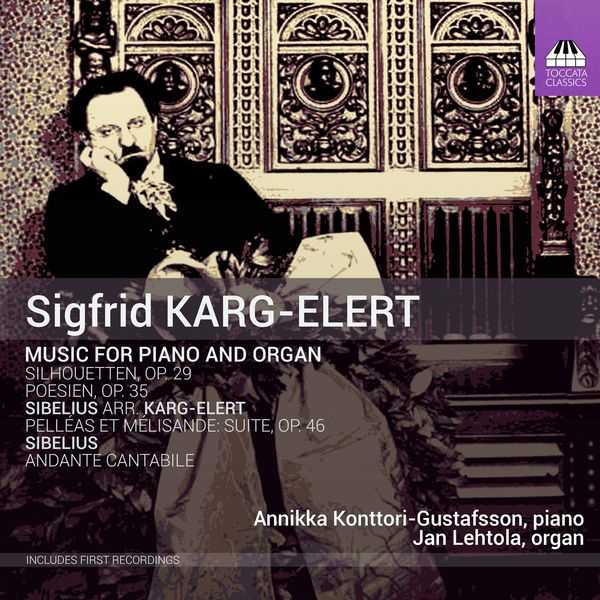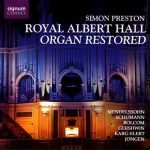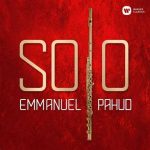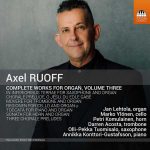

Composer: Sigfried Karg-Elert
Performer: Annikka Konttori-Gustafsson, Jan Lehtola
Format: FLAC (tracks)
Label: Toccata
Catalogue: TOCC0419
Release: 2017
Size: 758 MB
Recovery: +3%
Scan: yes
Pelléas et Mélisande, Op. 46 (Arr. S. Karg-Elert)
01. I. At the Castle Gate
02. II. Mélisande
03. III. A Spring in the Park
04. IV. The 3 Blind Sisters
05. V. Pastorale
06. VI. Mélisande at the Spinning Wheel
07. VII. Entr’acte
08. VIII. The Death of Mélisande
Poesien, Op. 35
09. No. 1, In memoriam
10. No. 2, Dialog
11. No. 3, Epigramm
12. No. 4, Parabel
13. No. 5, Ideale
Silhouetten, Op. 29
14. No. 1, Cantilene
15. No. 2, Aubade (Morgenständchen)
16. No. 3, Alte Tanzweise
17. No. 4, Berceuse mignonne (Wiegenliedchen)
18. No. 5, Quasi minuetto
19. No. 6, Tempo di ballo
20. No. 7, Scherzino
21. Andante cantabile in E-Flat Major, JS 30b
It might be a tad far-fetched to believe this album is dedicated to Karg-Elert, as more than a third in fact represents Sibelius’ Pelléas et Mélisande, arranged by Karg-Elert for piano and harmonium. But it is an undeniable fact that the texture, sound design and balance are those developed by this great expert on harmonium, more precisely on the Art Harmonium, the “Kunstharmonium”, an instrument designed by French organ builder Mustel (who also invented the celesta) featuring countless technical possibilities, thus improving upon the original harmonium. In addition to his rewriting of Sibelius, two of his main compositions for piano and Kunstharmonium are also presented in this album: unique, unclassifiable works charged with such differing influences that it’s hard to imagine they could combine so well in a single result – Reger, a hint of jazz, Bach, Scriabin, Grieg, Vierne, Debussy, late romanticism mingling with impressionism and a touch of expressionism… That’s the real Karg Elert. The mix of piano and harmonium (which the public mostly knows through Rossini’s Petite messe solennelle (Little Solemn Mass), proof that the combination can work) remains very unusual, so much that it is almost impossible to tune both instruments together; as a result, “beats” occur, odd acoustic lags arise from each new performance, each new recording. In a way, this music is constantly moving.



